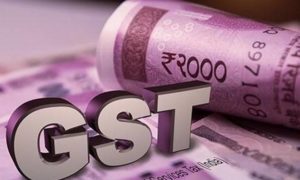With the GST rate set to be harmonised across the textile chain, the move will impact manufacturers and consumers, coming on the back of the pandemic and higher raw material costs
Textile and apparel manufacturers have expressed concern over the Goods and Services Tax Council’s decision to change GST rates on finished textile and apparel products.
There will be a uniform rate of 12 percent across the textile value chain from January 1, 2022, the finance ministry said in a notification on November 18. GST on fabrics will increase to 12 percent from 5 percent and that on apparel of any value will go up to 12 percent, compared to earlier, when pieces priced up to Rs 1,000 were subject to 5 percent GST.
Moneycontrol explains why the government is changing the GST rates, what are industry’s concerns, and how the move will likely impact consumers and manufacturers, especially small businesses that have a significant footprint in the textile space.
Why the rates are being changed
The objective behind the proposed changes is to correct the problem of inverted duty structure faced by a segment of the textile value chain. An inverted duty structure is when taxes on inputs and raw material exceed those on output or the final product.
Businesses face higher GST rates on raw material than on finished products, which are refunded by the government at a later date. The GST Council has addressed the issue of inverted duty structure for many industries. However, it still persists for footwear, textiles, pharmaceuticals and fertilisers.
Refund of unutilised input tax credits under the inverted duty structure of GST has been a long-pending issue for businesses.
According to Sanjay Jain, chairman of the Confederation of Indian Textile Industry, only 15 percent of the textile sector – which is the manmade fibre sector and the yarn sector – face the issue of inverted duty structure.
“Our major argument is that why does the government want to adversely impact 85 percent of the industry in order to solve a problem of the 15 percent?” Jain asked.
Industry’s concerns
Associations representing the textile manufacturers have said the proposed move will create stress on working capital requirements of manufacturers, especially micro, small and medium enterprises.
As per MSME registration portal Udyog Aadhaar, textile manufacturing MSMEs registered between September 2015 and June 2020 were 651,000, while apparel MSMEs were 428,000.
Ashok Todi, president of the West Bengal Hosiery Association and vice president of the Bharat Chamber of Commerce, said the proposed changes would push lakhs of MSMEs into the unorganised sector or result in their closure.
He said the uniform rate will make it hard for small players to remain afloat as the difference in the rate of tax on the basis of price was crucial for those who produce non-luxury/non-premium items.
Impact on consumers
Rahul Mehta, chief mentor of the Clothing Manufacturers Association of India, said the textile industry will not be able to absorb the increase in GST because it is still recovering from the impact of two waves of the pandemic and reeling from an unprecedented increase in raw material costs in the past year.
“The cost of yarn has gone up by 60 percent in the past 12 months. So, the government is putting an additional 7 percentage point increase on consumers at a time they are already faced with a 20 percent cost increase due to profit margins,” said Mehta.
He noted that by putting a uniform GST rate structure in the textile value chain, the government will mop up an additional Rs 7,000-8,000 crore in tax collections.
“GST collection is on average about Rs 1.25-1.3 lakh crore per month. An additional Rs 7,000 crore in a year is peanuts. Is it worthwhile playing around with an industry which employs 12-15 million people?” Mehta asked.
The associations said they have been in continuous talks with the government over the GST issue and are hopeful that the rate changes will be put on hold.
“The government has been understanding our concerns, so I will be hopeful even till the night of December 31 that the government will reverse its decision,” said Vijay Kariwala, senior vice president of the West Bengal Garment and Dealers’ Association.
According to a study by the Clothing Manufacturers Association of India, the GST rate changes will result in 700,000 to 1 million direct job losses in the sector.





































